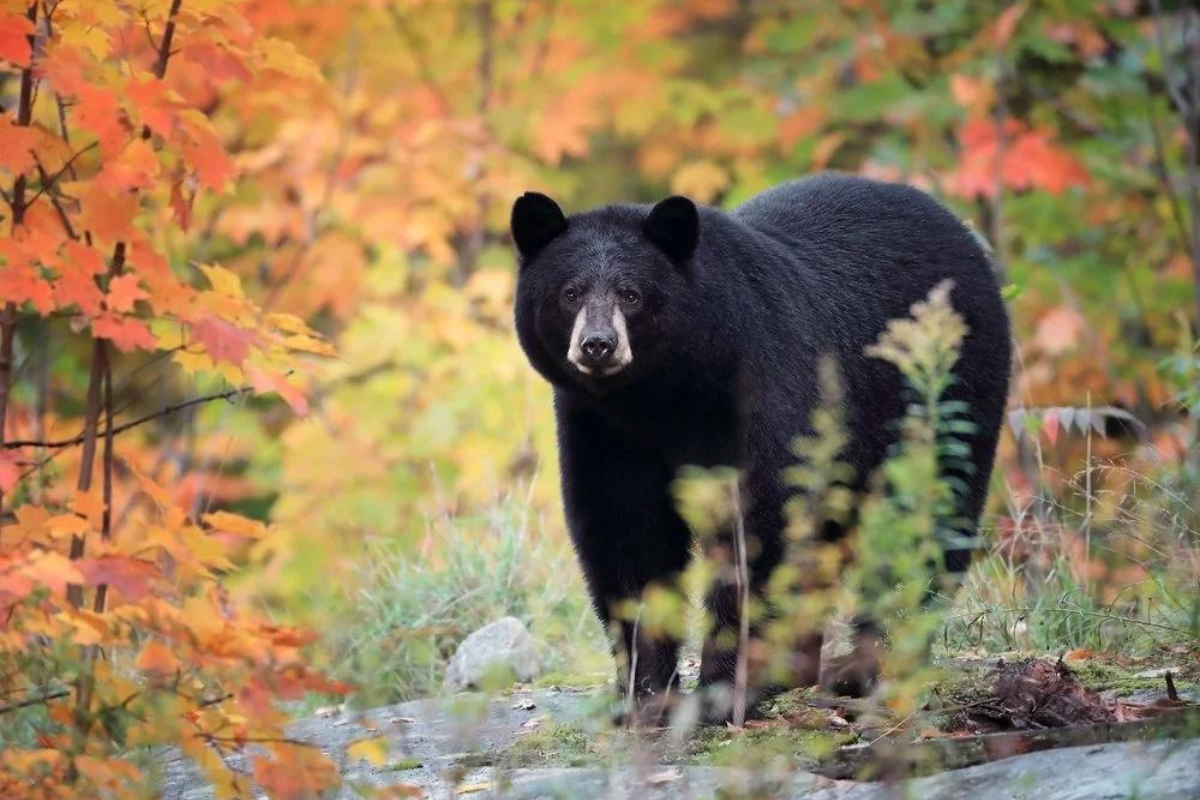More than half of Americans said they are happiest in the fall, according to a 2020 survey conducted by OnePoll. In the Northeast, perhaps it’s because the season brings with it lots of joyful things to do—watching the leaves change color, picking apples and pumpkins, drinking cider and pumpkin spice lattes, exploring corn mazes and haunted houses, going on hikes and prepping for Halloween and Thanksgiving.
Likewise, fall is alluring to black bears. They enter a period of excessive eating in September called hyperphagia to help them survive the winter months and are on the move looking for berries, fruits and nuts up to 20 hours a day. And moms-to-be are searching for a good birthing den and nursery. That might be a hollow tree, under fallen trees, an excavated mounds or in “nests” beneath briar patches.
Despite the fear mongering headlines you might read in the media about black bear activity and sightings—every sighting is not a different bear—there are simple things people can do to live responsibly with bears and keep themselves and bears safe during fall and every season.
“Bears have adapted to living near humans, now it’s up to humans to adapt to living near bears,” says a statement from Bearwise (bearwise.org), an education program launched in 2018 by biologists.
We couldn’t agree more.
Black bears are opportunistic feeders and can sniff out food scraps in your garbage, ripe berries in the air and food grilling a mile away, according to Bearwise. So, if you live where bears live, bear-resistant trash cans are necessary. After many years of testing, Kodiak Products (kodiakproducts.com) now offers a fully automated bear-resistant can certified by the Interagency Grizzly Bear Committee. Visit igbconline.org for a listing of other approved bear-resistant products. Also, never leave pet food outside and clean and store grills.
Birdseed and grains have lots of calories, so they’re extremely attractive to bears. Removing feeders from March-November is the best way to avoid baiting bears into your yard. You can still attract birds to your yard with a water feature, nesting boxes or planting native plants, flowers, bushes, vines, trees and evergreens.
And know that if you have pets such as pigs, chickens or miniature horses, it is your responsibility to protect them with electric fencing to keep bears away.
If you do happen to see a bear in your yard, from a safe distance, make loud noises, shout, bang pots and pans together or use an air horn to scare away the bear. You do not want bears to ever feel comfortable in your yard.
Go the extra mile for bears
Take time to educate your neighbors about what they are doing that is leading to unwanted interactions with bears. You can also urge local government to draft and pass ordinances that support BearWise behavior. The ordinances can address such issues as wildlife-resistant trash storage, pet food storage, securing attractants, and feeding wildlife, including birds. Sample ordinances can be found at bearwise.org/bearwise-communities/.
Into the woods
If you love fall hiking, carry bear spray—many studies show that properly deployed, it is by far the most effective way to deter a bear. Here are some other tips about outdoor activities from BearWise:
● A surprised bear can feel threatened and strike out to defend itself from the “threat.” Cyclists and runners should leave ear buds at home, stay alert and periodically make noise, especially on turns and blind curves.
● Slow down when driving, especially at dawn, dusk and at night when chances of colliding with wildlife increase dramatically.
Managing your behavior, not bears, will ensure fall, and every season, is a happy one for you and bears.

